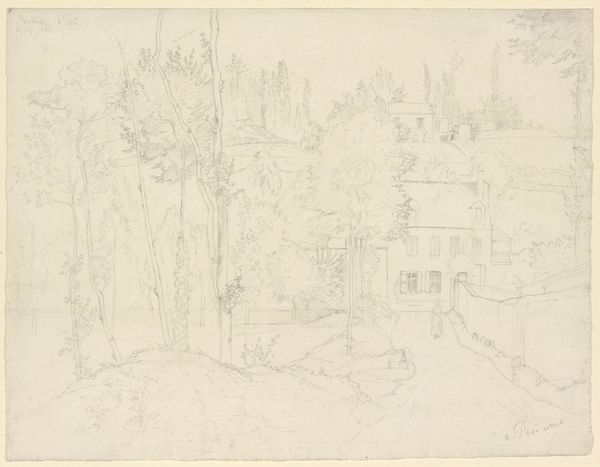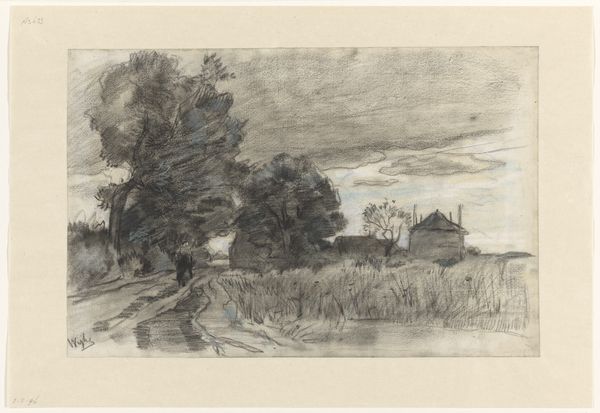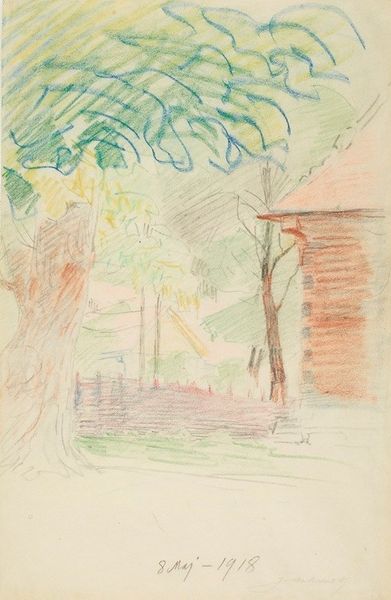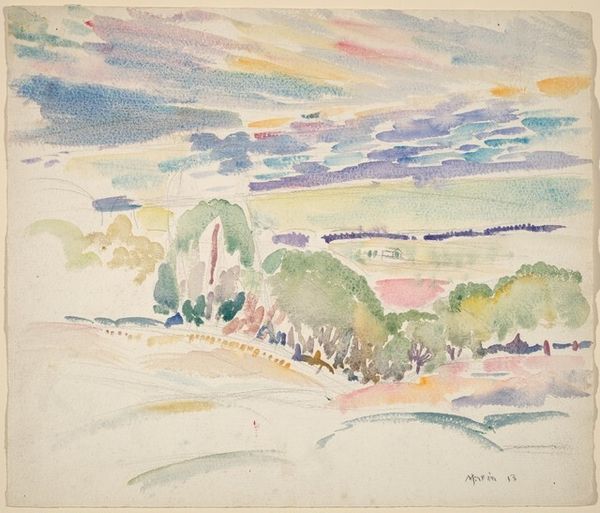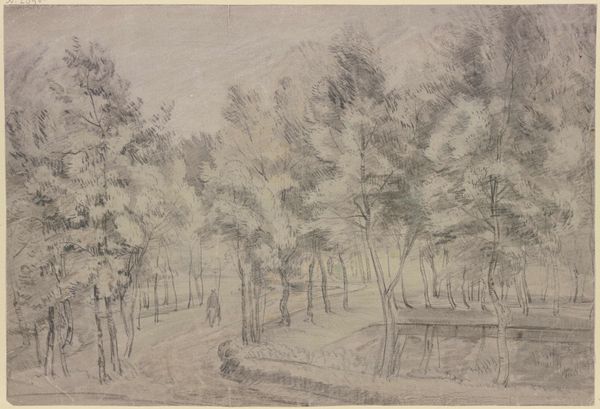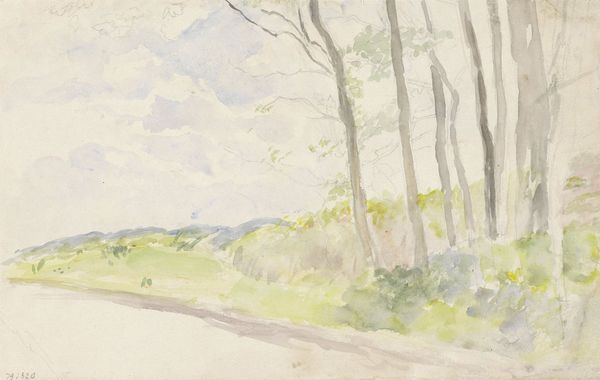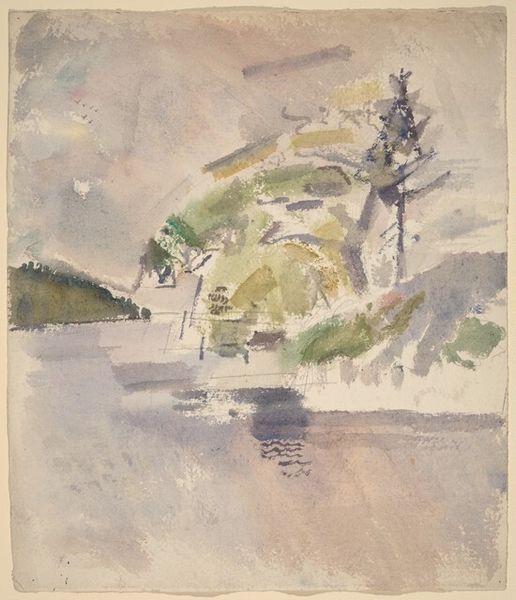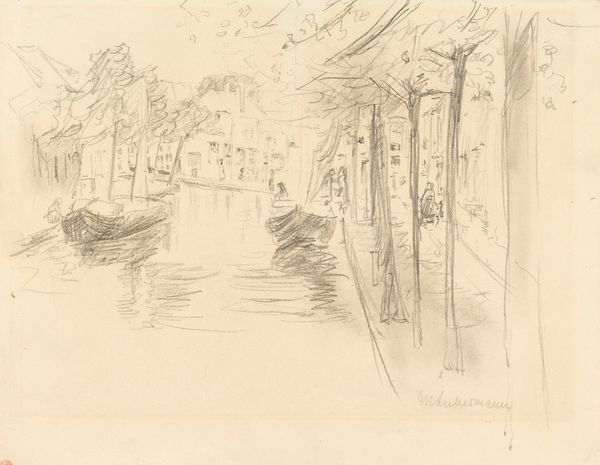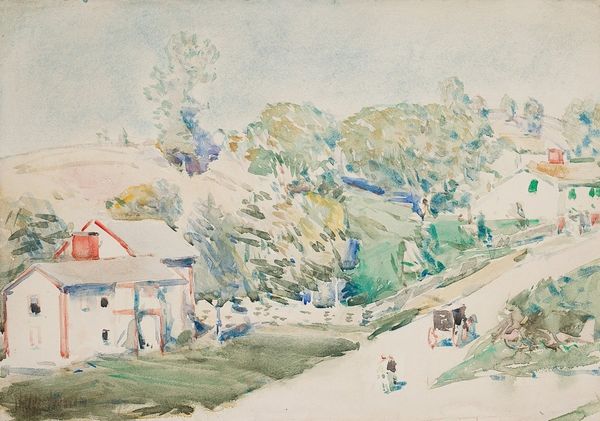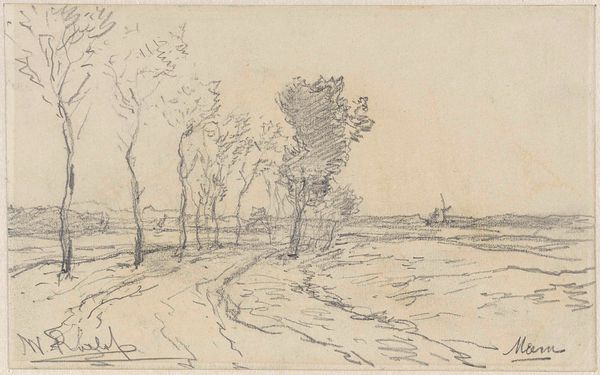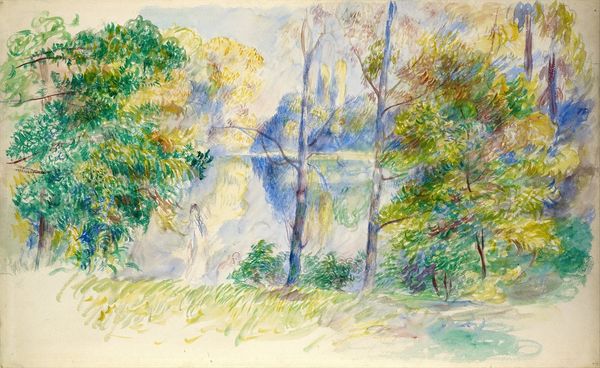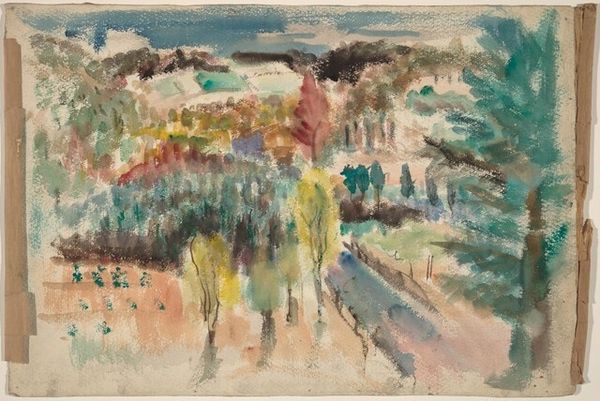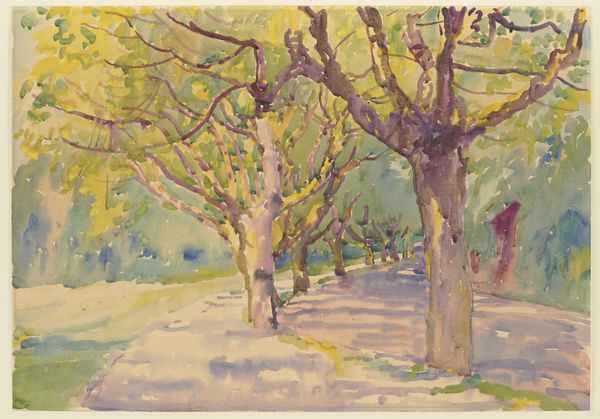
Dimensions: height 460 mm, width 580 mm
Copyright: Rijks Museum: Open Domain
Curator: Johan Thorn Prikker’s “Omzoomde bosweg,” which translates to “Bordered Forest Road,” created sometime between 1878 and 1932. He worked in pencil and watercolor on paper, it seems. It’s interesting to consider this almost Impressionistic style, so gentle. What strikes you most immediately? Editor: The hazy light, definitely. It's like seeing a memory. The colours feel like whispers rather than pronouncements, like the kind of light you see through lace. You can feel the artist relishing in those quiet, in-between spaces. Curator: Absolutely, the layers upon layers! It has that Post-Impressionist vibe of exploring emotional resonance through colour and form, rather than objective reality. I imagine Prikker walking this path, almost tracing his thoughts as he looked at it, filtering his senses into something tangible on the page. And what about the sheer number of these individual marks, like tiny laborers on the page creating that haze! I keep thinking about paper and the industry that surrounds it, the forests leveled, the work of pulping it... Editor: Ah, see, you're already down to the earthly nitty-gritty, the literal ground this image sits on! For me, though, it’s a question of intention, a dialogue between seeing and feeling, less a document of industry, more a reverie on transience, a search for a spiritual, ephemeral landscape, as opposed to a mere, material document. Curator: Right, but is that disconnect itself an inherent product of class? Consider who can afford that spiritual remove, who has to confront material reality daily? Editor: Fair enough, always a healthy question to keep at the fore. For me, this drawing provides a beautiful, impressionistic contrast, blurring the material to illuminate what feels beyond it. Maybe, like most landscapes, this reminds us that perception is personal. Curator: It's also a solid reminder to look critically, question the surface. After all, beauty can also obscure the structures that allow its creation. Food for thought. Editor: Precisely. Maybe the truth is somewhere there, in the mist between labour and longing, on that little unassuming watercolor sketch of a walk through a wooded edge.
Comments
No comments
Be the first to comment and join the conversation on the ultimate creative platform.

